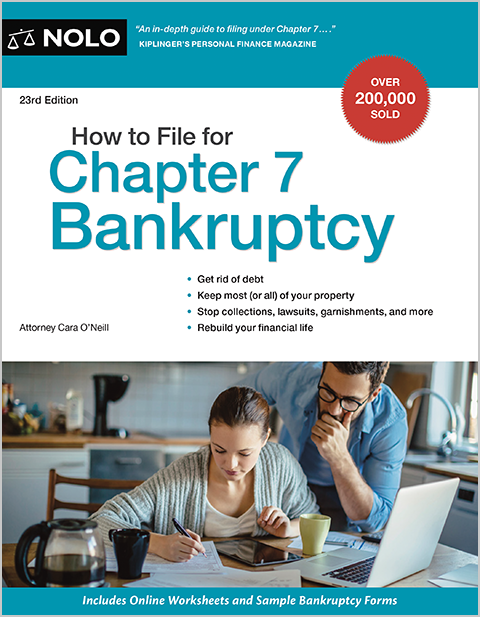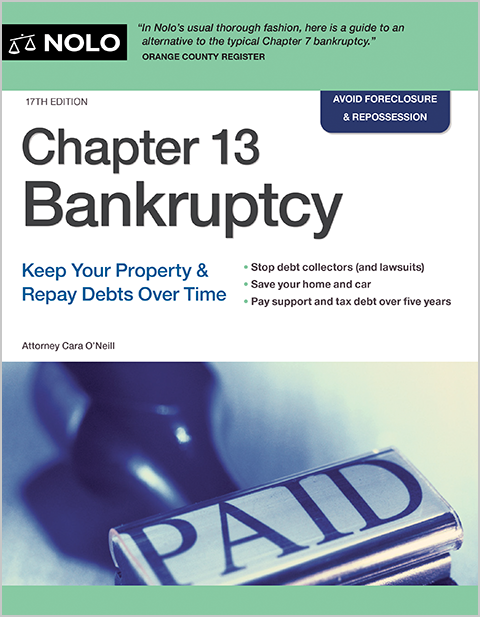 Bankruptcy Procedures
Bankruptcy Procedures
If you plan to file for bankruptcy, take the time to learn about the bankruptcy process before you jump in. Start by reviewing the steps in a typical bankruptcy case for both Chapter 7 and Chapter 13. Then learn about important bankruptcy procedures, protections, and requirements, like the credit counseling requirement, the powerful automatic stay, the creditors' meeting, the Chapter 13 confirmation hearing, and the role of the bankruptcy trustee. You can also find information on converting from one chapter of bankruptcy to another, what happens if creditors challenge certain aspects of your bankruptcy, and more.
A creditor or the trustee can object to the discharge of one or all of your debts in bankruptcy.
Learn about secured, unsecured, and priority debts in bankruptcy.
Your bankruptcy was dismissed and you're wondering what happens next. If the court dismisses your Chapter 7 or Chapter 13 bankruptcy case without prejudice, you can refile your case right away.
Ultimately, the bankruptcy court will close your matter after the trustee settles outstanding issues, sells any assets, pays out funds, and files a report with the court. Learn how the trustee's duties can affect the length of a Chapter 7 case.
Learn how to stop a Chapter 13 dismissal by opposing the trustee's motion to dismiss your Chapter 13 bankruptcy case. You'll discover how to object to a Chapter 13 dismissal for nonpayment if the trustee is wrong and what to say if you missed your payments and need time to catch up. You'll also learn how to avoid a Chapter 13 motion to dismiss and what happens if your Chapter 13 is dismissed.
Learn about adversary proceedings in bankruptcy.
If you file for bankruptcy more than once a year, the automatic stay lasts only 30 days or, when filing more cases, doesn't apply at all. Find out whether you'll be protected from creditor actions when filing for bankruptcy.
The automatic stay in bankruptcy protects you from creditor actions like foreclosure, wage garnishment, and repossession.
A judgment lien is created when someone wins a lawsuit against you and records the judgment against your property.
You may be able to get avoid (get rid of) judgment liens in Chapter 7 bankruptcy.
The Chapter 7 trustee reviews the bankruptcy petition and supporting documents for accuracy and potential fraud, checks identification, exams you, sells property for the benefit of creditors, and more.
The Chapter 13 bankruptcy trustee will review your documents and repayment plan, oversee the 341 meeting of creditors, and distribute repayment plan funds.
Filing a proof of claim in bankruptcy? Get the complete step-by-step guide covering deadlines, required documents, Form 410 completion, and expert tips to avoid costly mistakes.
Learn about secured, unsecured, and priority debts in bankruptcy.
Your bankruptcy was dismissed and you're wondering what happens next. If the court dismisses your Chapter 7 or Chapter 13 bankruptcy case without prejudice, you can refile your case right away.
Learn the consequences of dismissed bankruptcies, the differences between voluntary and involuntary dismissals, and whether you can refile your Chapter 7 or 13 bankruptcy after dismissal by the court.
Empower Yourself: DIY Products by Nolo
Sidestep the lawyers with do-it-yourself books, documents, and software.
Nolo offers hundreds of consumer-friendly, do-it-yourself legal products for all types of legal situations. Browse our full product list.
More Legal Issues
Click below to view more legal issues. Our extensive collection of legal topics ranges across different areas of practice.
Corporations Car Accidents Criminal Law Debt Management Disability Law Divorce & Family Law

Learn About Our Team
Our editors have over 100 years of combined experience practicing law. These professionals have worked in a wide range of legal areas, from estate planning to criminal law to business formation and beyond. They’re experts at explaining complicated legal issues in easy-to-understand terms.
Learn more about the team that manages Nolo’s articles, books, and DIY tools.
Need a Lawyer? We Can Help
Find an experienced, local attorney in three easy steps. Our process is designed for ease and simplicity.
Describe Your Case
Briefly tell us about your case, and provide your contact information.
Get Connected
We find and instantly list attorneys that can best handle your case.
Hire an Attorney
Choose the attorneys you would like to work with.
Nolo Legal Dictionary
Find plain-English definitions for legal terms by browsing Nolo's Law Dictionary.
Are You an Attorney?
Grow your firm with Martindale-Nolo, the largest legal network, and learn more about our attorney lead-generation and marketing services.
Integrity and Expertise You Can Rely On
At Nolo, we prioritize quality and transparency because we know how important reliable legal information is to our readers. Our information is meticulously researched, regularly updated, and written in plain English by our experienced writers and editors. Learn more about our editorial standards.


